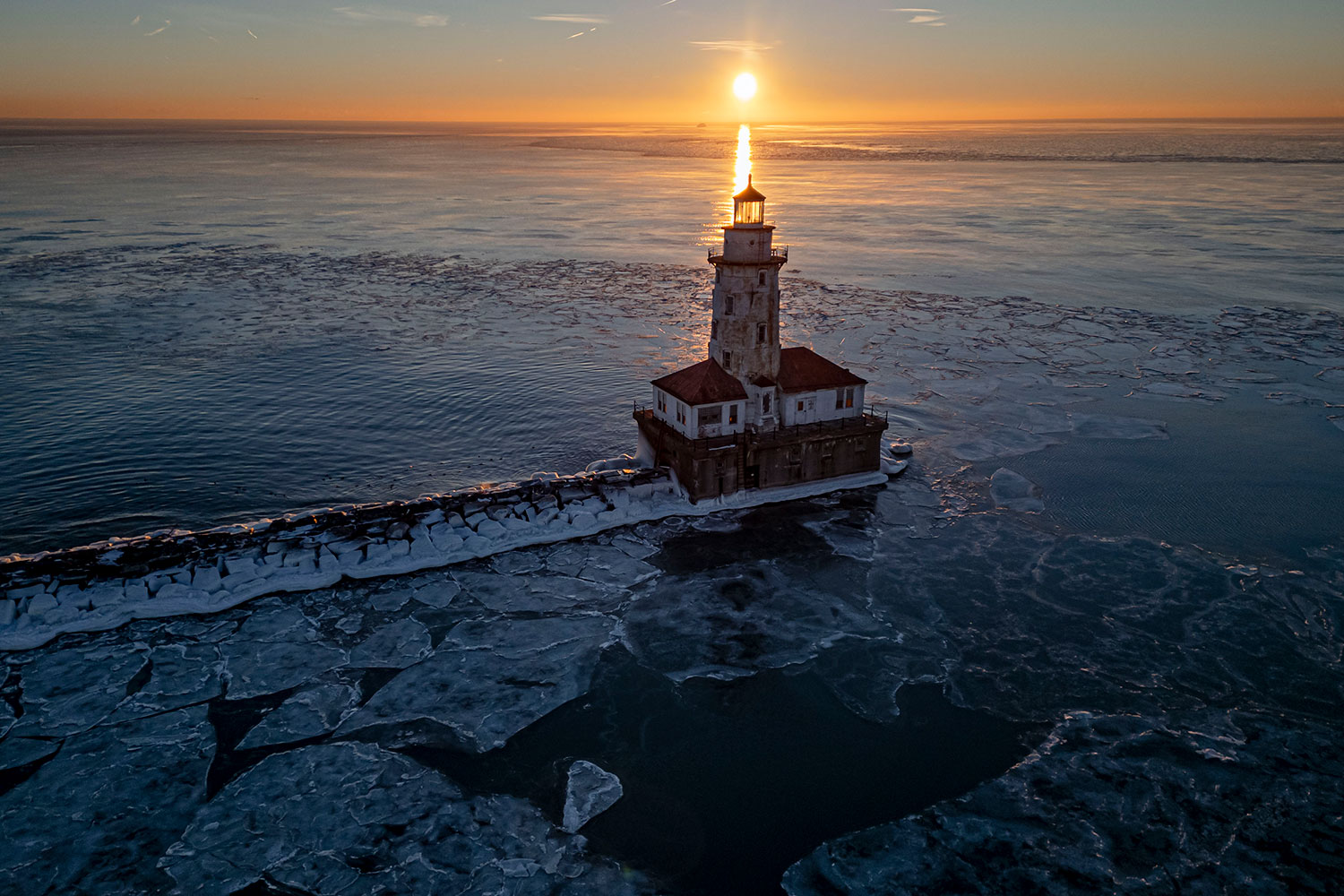All the Great Lakes are great. That’s how they got their name. But some Great Lakes are greater than others. Here’s how Chicago magazine ranks them.
5. Lake Ontario
Ontario is out there on its own, the only Great Lake that does not lap against the Great Lakes State of Michigan, separated from its sisters by Niagara Falls, over which they pour 44 million gallons a second. Niagara Falls the waterfall is North America’s greatest natural wonder, with a place in American folklore as a honeymoon site and a challenge to barrel riders. Niagara Falls the town is a tacky carnival that put down roots and incorporated itself, with a wax museum and a Ripley’s Believe It or Not outpost. Toronto is the largest city on the Lakes; it surpassed Chicago by annexing its suburbs (hint, hint). Unlike Chicago, though, Toronto made the mistake of building all the way to the waterfront, leaving little room for beaches. Ontario is too cold to swim in, anyway. For lakeside recreation, most Torontonians take a ferry to the islands. Ontario is the exit to the Great Lakes, flowing into the ocean-bound St. Lawrence River. The Sand Banks on the Prince Edward Peninsula are its only dunes. The lake ends at Kingston, a town that was founded during the days of the kings George, and still looks pre-Victorian. Ontario is the sister who moved away, and is seldom heard from.
4. Lake Erie
The smallest and shallowest of the lakes, Erie’s showcase city is Cleveland — a ding right there. At the other end of the lake is Buffalo, which makes Erie the definitive Rust Belt lake, ringed with cities once important in the once-important steel industry. On the other hand, Erie’s southernmost location makes Cleveland’s Edgewater Beach a delightful swimming hole. On the Canadian side are Point Pelee, the southernmost spot in mainland Canada, and Pelee Island, southernmost Canada period, which can be reached by ferry from Sandusky, Ohio. On the north shore of Lake Erie are a string of charming fishing villages. In Port Dover is a maritime museum and a memorial to fishermen who lost their lives to the lake’s storms. Port Stanley is as picturesque a small town as exists on this continent, with colorful houses clustered along the beach, and fishing boats moored at the mouth of Kettle Creek.
3. Lake Huron
If this is such a great lake, why doesn’t it have an actual city on it? Lake Huron’s most populous settlement is…Sarnia, Ontario, a smelly river town best known for its chemical plants. Across the St. Clair River is Port Huron, Michigan. As a chokepoint of the Great Lakes, Port Huron is an excellent spot for watching 1,000-foot ore freighters slide past. The Thumb of Michigan sticks up into Lake Huron, with forgettable small towns — Harbor Beach, Bay City — that lack the sunsets and sand dunes of Michigan’s west coast. In the northeast corner of Lake Huron is Manitoulin Island, Ontario, which is the largest freshwater island in the world, and whose Treasure Island, in Lake Mindemoya, is the world’s largest island in a lake on an island in a lake. The Chi-Cheemaun ferry connects Manitoulin with Tobermory, on the Bruce Peninsula, defining the entrance to Georgian Bay. Lake Huron’s sandiest beaches are on the east side, especially at Kincardine, a resort for cottaging Canadians.
2. Lake Superior
Lake Superior is the biggest: 31,700 square miles. It’s the deepest: 1,332 feet. It’s the baddest, for sinking the Edmund Fitzgerald. It also has the most dramatic scenery: Michigan’s Keweenaw Peninsula is the Big Sur of the Midwest, and the misty coves of the northern shore inspired Canada’s greatest landscape painters, the Group of Seven. So why isn’t Lake Superior the best? It’s remote, it’s cold, it’s unpopulated. Ironwood Mich., pop. 5,045, and home of a giant fiberglass Hiawatha and the world’s largest ski flying hill, is 400 miles from Chicago. Locals say the lake is too cold for swimming, except on rare occasions when the wind blows warm surface water inland. Only 440,000 Americans and 229,000 Canadians live around Superior. (Thunder Bay, the largest city, has a great music scene, because it received WGN and WLS from across the lakes. That’s how Paul Shaffer, David Letterman’s bandleader, first heard American tunes.) On the other hand, the surfing on this turbulent lake is amazing. The highlight of the Great Lakes surf documentary Unsalted takes place in Duluth, in January, with guys in double wetsuits riding ocean-sized waves. And Lake Superior contains the least-visited national park in the Lower 48: Isle Royale, a three-hour ferry ride from Copper Harbor, Michigan. On Isle Royale is concentrated every element of Northernness: fir trees, moose, wolves, and mosquitoes.
1. Lake Michigan
Hammond, Indiana’s own Jean Shepherd once called Lake Michigan “Queen of the Great Lakes.” We agree. Why? It’s the most populous Great Lake, providing the essential element of life to 12 million Americans. (Lake Michigan is the only Great Lake entirely within the United States.) The lake’s enticements are well-balanced on both sides. On the west is our big city of Chicago, and Door County, Wisconsin, which, as a peninsula thrusting into Green Bay, offers both sunrises and sunsets. On the east are Michigan’s wine and beach towns — New Buffalo, South Haven, Grand Haven, Ludington — culminating at the Sleeping Bear Dunes, as tall as a skyscraper. At its southern end, Lake Michigan is citified and swimmable. Its northern end reaches as far as Michigan’s Upper Peninsula, connecting the ore mines of the North Country with the steel mills of Indiana, through the port of Escanaba. The Garden Peninsula is as remote and empty as the rest of the U.P., but is just far south, and just warmed enough by the waters, for apple growing. City, country, farm, vineyards, beach, sand dunes, steel mills — Lake Michigan is the one Great Lake that has it all.



